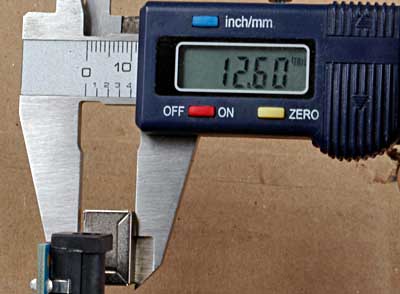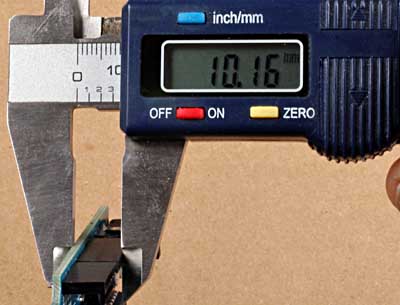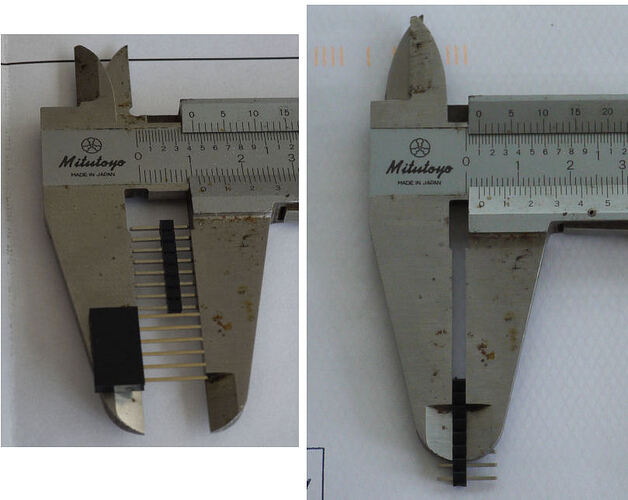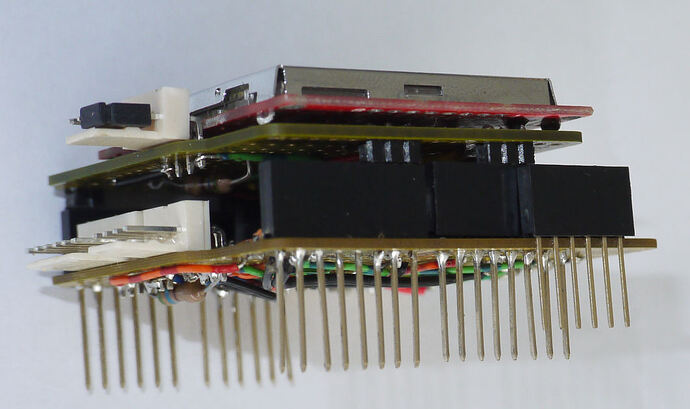Nick_Pyner:
Harsh? Me? Not for one moment. I merely state the bleeding obvious.
I am not sure why this has you so angry. I expressed a personal preference and have not demanded that anyone else adopt it. I am entitled to prefer things a certain way, and equally entitled to express that in a public forum.
If that photo attached is actually a case of squeezing a shield over a USB socket, then it is a fair example of bad design, bad planning, and user abuse but I utterly fail to see how this can be fixed by using offset headers.
It is an all too common example of bad design. Both of those shots were commercially available Ethernet shields. One, using stackable headers (yes, they were too short), like many other offered for sale, does not work very well. The other, using offset headers, works well. That's how it can be fixed and your inability to see that is sad, but not really my concern. The "abuse" you speak of was merely for demonstration purposes. No actual shields were injured in making those pictures.
And the second “much, much nicer” picture demonstrates nothing, and absolutley nothing that cannot be done with stackable headers.
It quite obviously demonstrates the problem we saw with the first one was solved by the makers of the second board using offset headers. I did not claim it could not be fixed with longer stackable headers, did I?
Actually, what it might demonstrate is that you can fix the problem on a Duemilanove by moving the shield 0.15” sideways, but I doubt it, there is certainly no evidence to that effect, and I can’t be bothered to look any further.
Exactly the same thing is true of a Uno too.
Clearly, if this is to be fixed, it will be fixed by addressing the length of the pins rather than their position.
Clearly there is more than one way to do this. You prefer extra long, easily bent or broken stackable headers, I prefer offset headers that may indeed make the shields a little wider. Each solution has it's merits and each has it's drawbacks. Pick the one that works out best for you.
What we do see is a pathetic exercise that depends on scrounging plastic pinrow blocks, which might be better employed for their original purpose
What? Where did you see this? It was merely a suggestion by the OP. No one, as far as I know, has expended any real effort in scrounging. Certainly not enough for you to get your knickers in a knot and start insulting people you don't know.
and sloppy soldering, which may result in the pins not being properly bedded down.
Really? The Arduino folks do sloppy soldering? I actually don't see this in those pictures, and I can assure you that that particular Duemilanove has no sloppy soldering.
Indeed, an absurd preference for using male headers in a situation like that is more likely to be the cause of the problem than a solution. I say that simply because I am unaware of male header with extra long pins and such a predeliction may obscure the view of stackable headers that fill the bill.
Wow, you are really bent out of shape over this, huh? Sorry to here that, but I am entitled to my predilections and should be allowed them without being harangued over it. Your absolute hate of the concept of using offset headers seems to have consumed you and drawn you into near religious fervor over it. I think it's time to relax and leave others to their little predilections.
I think it fair to say that using male headers is likely to give you four things
- a wider board
- a substantial hit in wiring convenience
- one less row of holes
- twice as much soldering
all of which are more likely to be liabilities than assets.
Well, maybe two of the above (1 and 4), but I really do not see them as liabilities as they have never been in my experience.
So, in summary, sticking with male headers is a dumb exercise...
Well, that is your opinion and you are welcome to have it. I just don't share it and I might not be entirely alone.
I might point out, that another solution to the clearance problem is to remove the problem by using a truncated board, thereby enabling the use of standard headers. I have a few and they are quite sufficient.
There you go! Accepting alternate solutions and all. Atta boy! Maybe there is hope for you yet.





